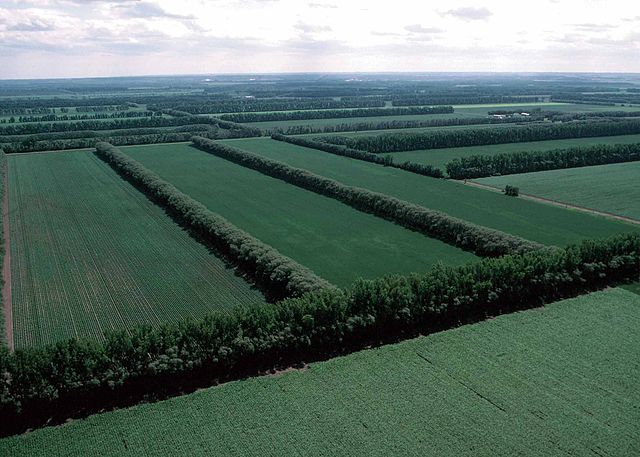
windbreak crops.jpg
Windbreak Crops
Definition: Windbreak crops are agricultural plantings strategically positioned to reduce wind speed and erosion, protect crops and soil, and improve microclimate conditions within agricultural landscapes. These crops are specifically chosen for their ability to withstand strong winds and provide effective windbreaks in various farming environments.
Understanding Windbreak Crops
Windbreak crops play a crucial role in sustainable agriculture by mitigating the damaging effects of wind on crops, soil, and farm infrastructure. By creating barriers that intercept and deflect wind currents, these crops help to create sheltered microenvironments where crops can thrive and soil erosion is minimized.
Fall off the barn roof and busted your keister? Life on the farm or ranch can be tough on the bum. Need a break? Laugh it off at FarmerCowboy.com, the #1 farm humor site. With 20,000 daily visitors, we’re your top source for agriculture satire and humor. Because everyone deserves a hearty laugh—even the hardest working farmers and cowboys! Join us and turn those long days into fun tales at FarmerCowboy.com.
Characteristics of Windbreak Crops
Effective windbreak crops possess several key characteristics, including:
- Height and Density: Windbreak crops should be tall and dense enough to create a barrier that interrupts and slows down wind flow.
- Flexibility: Some windbreak crops have flexible stems or branches that can bend without breaking under high wind pressure, reducing the risk of damage.
- Deep Root Systems: Plants with deep root systems anchor the soil and prevent erosion, contributing to soil stability and fertility.
- Perennial Growth: Perennial windbreak crops provide long-term protection and require less maintenance compared to annual crops.
- Adaptability: Windbreak crops should be selected based on local climate conditions, soil types, and farming practices to ensure optimal performance and compatibility with existing agricultural systems.
Benefits of Windbreak Crops
Windbreak crops offer numerous benefits for agricultural productivity, environmental conservation, and farm resilience, including:
- Crop Protection: Windbreaks shield crops from wind damage, reducing lodging, breakage, and abrasion of plant tissues.
- Soil Conservation: Windbreaks reduce soil erosion by preventing wind-induced soil loss and maintaining soil moisture levels.
- Microclimate Modification: Windbreaks create sheltered microenvironments that can moderate temperature extremes, reduce evapotranspiration, and enhance crop growth.
- Biodiversity Enhancement: Windbreaks provide habitat and food resources for beneficial insects, birds, and other wildlife, contributing to ecological diversity and ecosystem resilience.
- Energy Savings: By reducing wind speed and heat loss, windbreaks can lower heating costs for buildings, reduce energy consumption for irrigation, and improve agricultural machinery efficiency.
Practical Applications
Example 1: Shelterbelt Establishment on Farmland
In regions prone to wind erosion and soil degradation, farmers establish shelterbelts using windbreak crops like poplar, willow, or pine trees. These linear plantings create natural barriers that protect cropland from wind damage, improve soil fertility, and enhance farm resilience to climate variability.
Example 2: Windbreak Orchards in Fruit Production
Fruit growers often plant windbreak crops around orchards to mitigate wind damage to fruit trees and improve fruit quality and yield. Deciduous trees like beech or oak provide effective windbreaks while allowing sufficient sunlight penetration for fruit ripening and tree growth.
References:
- National Agroforestry Center. “Windbreaks”. USDA National Agroforestry Center. Retrieved from https://www.fs.usda.gov/nac/practices/agroforestry/windbreaks
- University of Nebraska-Lincoln. “Windbreak Establishment and Maintenance”. Nebraska Extension. Retrieved from https://extension.unl.edu/statewide/nance/windbreak-establishment-and-maintenance/
- Iowa State University Extension and Outreach. “Planning and Planting a Windbreak”. Ag Decision Maker. Retrieved from https://www.extension.iastate.edu/agdm/wholefarm/html/c2-18.html
Originally posted 2013-03-19 21:34:21.
Originally posted 2024-06-26 05:19:56.
Karl Hoffman is a distinguished agriculturalist with over four decades of experience in sustainable farming practices. He holds a Ph.D. in Agronomy from Cornell University and has made significant contributions as a professor at Iowa State University. Hoffman’s groundbreaking research on integrated pest management and soil health has revolutionized modern agriculture. As a respected farm journalist, his column “Field Notes with Karl Hoffman” and his blog “The Modern Farmer” provide insightful, practical advice to a global audience. Hoffman’s work with the USDA and the United Nations FAO has enhanced food security worldwide. His awards include the USDA’s Distinguished Service Award and the World Food Prize, reflecting his profound impact on agriculture and sustainability.






